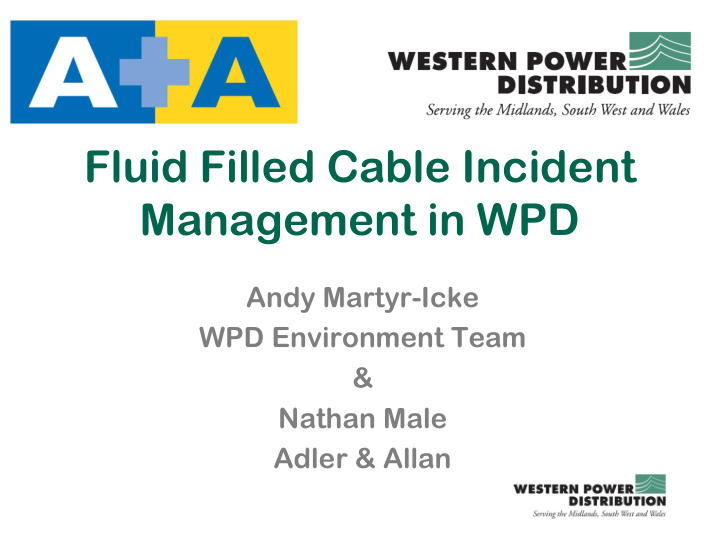



Fluid Filled Cable Incident Management in WPD Andy Martyr-Icke WPD Environment Team & Nathan Male Adler & Allan
Fluid filled (oil) cable leaks - WPD Total Total leak (litres) 75% RIIO-ED1 Reduction Target 2012/13 2013/14 2014/15 2015/16 2016/17 2017/18 2018/19 2019/20 2020/21 2021/22 2022/23 2023/24
In Introduction troduction – Principles underlying risk based approach – Route patrols and preliminary risk assessment – Ground Investigation and detailed risk assessment – Remedial Options Appraisal – Remediation Techniques
Principles of Risk Based Approach Mass s Balance lance Conce nceptua ptual l Site e Model del
Phased Investigation - 1 • Route Patrols – Desk Study and preliminary CSM – Patrol route – Sampling – Reporting
Phased Investigation - 2 • Preliminary Risk Assessment – Site visit and sample analysis during repair – Understand ‘Source – Pathway – Receptor’ linkages – Report to regulator
Phased Investigation - 3 • Ground Investigation and Detailed Risk Assessment – Testing, measuring, monitoring – Updating the CSM – Quantitative risk assessment and remedial target generation – Report to regulator
Remedial Options Appraisal - 1 • Fifteen techniques routinely considered • Civil Engineering methods • Physical methods • Chemical methods • Biological methods • Thermal and S/S methods • Identify feasible options • Carry out detailed evaluation
Remedial Options Appraisal - 2 • Assessment Criteria – Effectiveness – Operational issues – Track record – Permissions – H&S risk – Durability – Cost
Commonly Used Remediation Techniques Free ee Produc oduct t Recover covery In In-gr groun ound d Barr rrie iers rs
Remediation – Other Techniques • Soil Flushing • Chemical Oxidation • In-situ/Ex-situ Bioremediation • Monitored Natural Attenuation
Summary • Risk based approach based on mass recovered and CSM • Phased investigation leading to detailed CSM and risk based remedial targets • Phased options appraisal • Implementation of selected option(s)
Recommend
More recommend